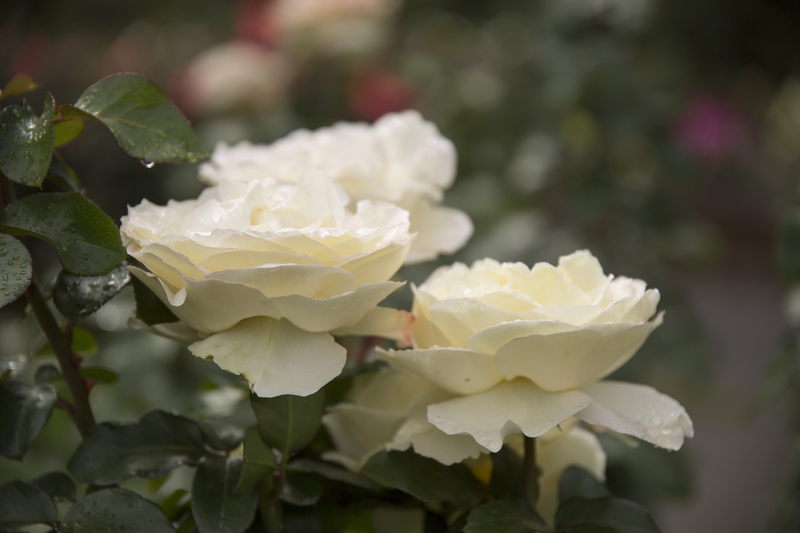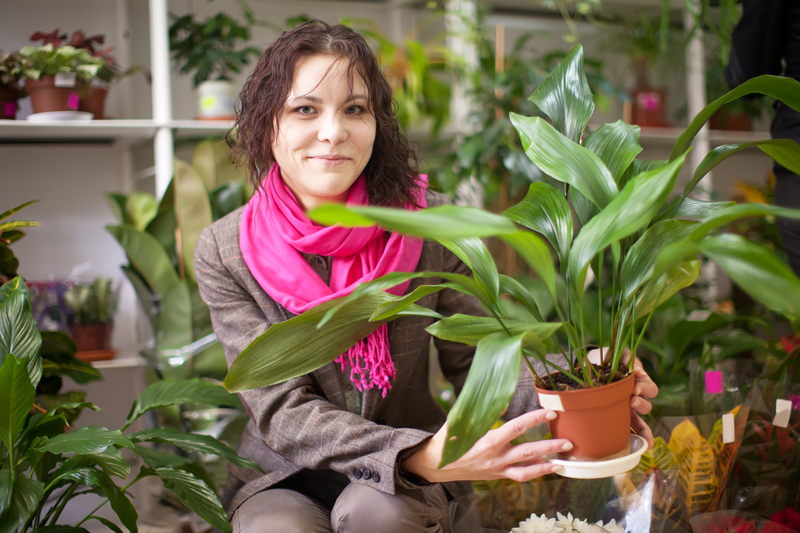Orchid Enthusiast's Guide to Perfect Care
Posted on 28/05/2025
Orchid Enthusiast's Guide to Perfect Care
If you're on a quest for thriving, resilient, and beautiful orchids, you've just landed on the Ultimate Orchid Enthusiast's Guide to Perfect Care. Orchids, with their exotic blooms and captivating presence, are an evergreen favorite among plant lovers worldwide. However, successful orchid care can be elusive without the right knowledge. This comprehensive guide reveals everything from choosing an orchid to fostering dazzling, long-lasting flowers in your home or greenhouse.

Understanding Your Orchid: Types & Unique Traits
Before diving into care routines, you must identify the type of orchid you have or wish to purchase. With over 25,000 species and more than 100,000 hybrids, orchids exhibit a vast spectrum of requirements. Yet, a handful of varieties dominate enthusiasts' collections:
- Phalaenopsis (Moth Orchids): Known for their resilience and frequent blooms, perfect for beginners.
- Cattleya: Famous for their vibrant colors and classic "orchid" shape.
- Dendrobium: Versatile, with both warm and cool climate species.
- Oncidium (Dancing Lady): Recognized for their spray-like flower clusters.
- Vanda: Loved for their stunning, colorful blooms and aerial roots.
Identifying your orchid's type determines the finer points of care. While most orchids share fundamental needs, subtle differences in light, temperature, and watering can make all the difference between an ailing plant and a blooming spectacle.
Choosing the Perfect Orchid for Your Home
Not all environments are orchid-friendly. Selecting an orchid species that matches your home's conditions is the secret to hassle-free flourishing. Consider the following:
- Light Availability: South or east-facing windows are ideal for Moth Orchids. Brighter windows suit Cattleyas and Vandas.
- Humidity Levels: Dendrobium and Oncidium tolerate lower humidity, while Vandas need 60-80%.
- Space: Compact types, such as mini Phalaenopsis, are great for desktops or small shelves.
Matching your space to the right orchid sets the scene for perfect care and long-term success.
The Essentials of Orchid Care: Master the Basics
Whether you're a novice or seasoned orchid lover, nailing the fundamentals is crucial. Let's break down the keys to a thriving orchid.
1. Lighting: Illuminating the Path to Flowers
Orchids are light lovers, but direct sun can scorch their leaves. Here's how to manage:
- Bright, indirect light: Place near an east- or south-facing window; use sheer curtains if sunlight is strong.
- Artificial lighting: LED grow lights work wonders in dim environments; maintain 12-16 hours of light daily.
- Leaf color guide: Healthy orchids have light-to-mid green leaves. Dark leaves suggest too little light; yellow or red tints indicate excess.
2. Watering Wisdom: Avoiding Root Rot
Orchids easily fall victim to overwatering. To achieve the perfect care routine:
- Check before watering: Let the potting mix dry out slightly. Stick your finger or a wooden skewer into the medium; water if it comes out nearly dry.
- Frequency: Typically, every 7-10 days. Smaller pots and warmer conditions may require more frequent watering.
- Technique: Water thoroughly, allowing excess to drain out. Never leave orchids standing in water.
- Quality: Use rainwater, distilled water, or tap water left out overnight to reduce chemicals.
3. Humidity: Creating a Lush Environment
Many species hail from tropical locales, thriving in 50-70% humidity. To boost humidity:
- Humidity trays: Place pebbles and water under pots without touching the roots.
- Room humidifier: Perfect for collections or dry climates.
- Grouping plants: Orchids release moisture, raising local humidity when clustered.
4. Temperature: Keeping Things Just Right
Most popular orchid varieties favor day temperatures between 65?F-80?F (18?C-27?C) and night temperatures a few degrees cooler. Sudden shifts can stress plants, so:
- Avoid cold drafts and hot air vents.
- Replicate natural cycles: Some species (e.g. Phalaenopsis) respond to a nighttime temperature dip by initiating blooms.
5. Feeding: Fertilizer for Fabulous Flowers
Feeding orchids correctly means vibrant leaves and rewarding blooms. Opt for a balanced, water-soluble orchid fertilizer--typically high in nitrogen (20-20-20). Follow the "weakly, weekly" approach:
- Dilute fertilizer: Use at half or quarter strength every week during growth, every 2-4 weeks during dormancy.
- Flush the pot: Every month, water thoroughly without fertilizer to prevent salt buildup.
6. Potting: The Art of Comfortable Roots
Orchids are epiphytes in the wild, clinging to trees--not growing in soil! Specialty potting mixes provide the airflow their roots crave. For superior orchid care:
- Choose well-draining mediums: Bark, sphagnum moss, perlite, and charcoal are common bases.
- Repot every 1-2 years: When the mix breaks down or outgrows the pot. Repotting encourages health and blooming.
- Use transparent pots: For Phalaenopsis, these allow light to reach roots and help you monitor moisture.
Expert Orchid Enthusiast Tips for Blooming Success
Diving deeper than the basics takes your orchid hobby to the next level. Here are curated pro tips:
The Reblooming Challenge
Getting orchids to rebloom is the ultimate validation of your care. To trigger flowering:
- Provide a temperature drop: For Phalaenopsis, a 10?F (5?C) drop overnight for a few weeks signals the plant to spike.
- Maintain consistent light: Even after flowers fade, orchids need good lighting for next cycle's flower spike.
- Rest periods: Species like Cattleya or Dendrobium may need a dry, cool rest before blooming again.
Pest and Disease Defense
Even expert growers battle pests. Orchid care perfection involves vigilance:
- Check regularly: Look for sticky residue, webbing, discolored spots, and malformed leaves.
- Common pests: Watch for scale, mealybugs, spider mites, and aphids.
- Treatment: Isolate infected plants. Use insecticidal soap, neem oil, or hand-remove pests with alcohol-soaked cotton swabs.
- Avoid overwatering: Dampness and stagnant air encourage rot and fungus.
Propagation: Growing Your Collection
Expanding your collection is rewarding. Methods include:
- Division: Preferred for sympodial orchids (e.g., Cattleya, Oncidium). Divide clumps during repotting, ensuring each section has 3-4 healthy pseudobulbs.
- Keiki propagation: "Keiki" (Hawaiian for "baby") are plantlets produced on flower spikes, common in Phalaenopsis and Dendrobium. When roots reach 2-3 inches, gently pot up the keiki.
Seasonal Orchid Care
Your orchids' needs shift throughout the year:
- Spring/Summer: Increase watering and fertilizing as new growth emerges.
- Fall/Winter: Reduce watering/fertilizing, watch for drafts, ensure adequate light as days shorten.
Displaying Orchids for Maximum Beauty
How you showcase your orchids can turn them into living art:
- Creative displays: Use hanging baskets, terrariums, wall mounts, or glass containers for elegant statements.
- Arrange by size and bloom color: Grouping makes a more dramatic impact and helps maintain microclimates.
Troubleshooting Orchid Problems
No Orchid Enthusiast's Guide to Perfect Care would be complete without a problem-solving checklist. Here's how to handle common orchid woes:
Yellow Leaves
- Single leaf: Often normal aging; remove with sanitized scissors.
- Multiple leaves: Check for overwatering, root rot, or lack of nutrients.
Brown Leaf Tips
- Usually from low humidity or salt buildup--flush pots and increase humidity.
No Blooms
- Insufficient light, too much nitrogen, or no temperature drop. Adjust conditions for your species.
Mushy or Black Roots
- Symptoms of root rot--trim damaged roots, repot in fresh medium, and review watering habits.

Orchid Enthusiast FAQ
How do I know when to repot my orchid?
Repot when roots outgrow the pot, the medium breaks down, or water drains too slowly. This usually occurs every 1-2 years.
Can I grow orchids outdoors?
Many orchids thrive in warm, shaded areas outdoors in summer, but bring them in before nighttime temperatures dip below 50?F (10?C).
Should I cut off old flower spikes?
For Phalaenopsis, cut above a node to encourage branching. For others, remove spikes at the base after blooming.
Conclusion: Flourishing as an Orchid Enthusiast
Mastering orchid care transforms your home into a miniature piece of the tropics, full of vibrant color and life. Follow the key principles: provide the right light, establish a consistent watering routine, maintain steady humidity and temperature, use orchid-specific soil, and feed thoughtfully. With these skills, your orchids will reward you with stunning blooms and vigorous growth for years to come.
Start your journey today: Choose an orchid that suits your lifestyle, give it attentive care, and join the ever-growing community of orchid enthusiasts. Your world of perfect orchid care awaits--happy growing!
Related keywords: orchid plant care, orchid growing, beginner orchid guide, advanced orchid tips, care of orchids, orchid care guide, orchid collector essentials.



